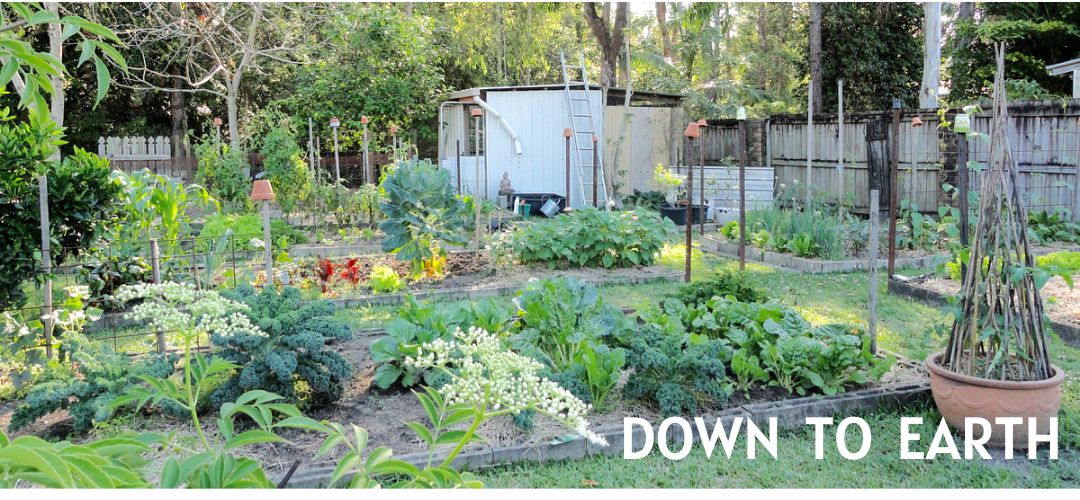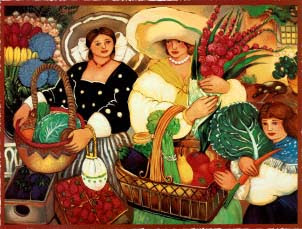A few years ago, when I started thinking about the true cost of food, I started to buy as much as I could in, and from, my own local area. It's very productive land here. We have local milk and cheese producers, lots of organic vegetable growers, honey men, organic beef and lamb growers and plenty of tropical and subtropical fruit. Some of my friends think it's strange that even though I live a frugal life, we spend more than we need to for milk and cheese. Often the local fruit and vegetables are cheaper than the non-local supermarket produce, but I don't mind paying more for local foods. It helps build my community.
When you think about it, a $2 lettuce doesn't really cost $2. It costs a lot more than that. If you calculate in the environmental cost of the transport that brings food hundreds or thousands of kilometres, add to that the damage done by pesticides, herbicides and artificial fertilisers and top that off with eroded soils, the excess water used to grow that lettuce and the nutrient runoff into waterways, and you start to get an understanding of the true cost of that lettuce, and food in general. It's not just the item, it's the system of production and transport that needs to be calculated in.
When you think about it, a $2 lettuce doesn't really cost $2. It costs a lot more than that. If you calculate in the environmental cost of the transport that brings food hundreds or thousands of kilometres, add to that the damage done by pesticides, herbicides and artificial fertilisers and top that off with eroded soils, the excess water used to grow that lettuce and the nutrient runoff into waterways, and you start to get an understanding of the true cost of that lettuce, and food in general. It's not just the item, it's the system of production and transport that needs to be calculated in.
When you go shopping, take a basket or cloth tote bags with you so you're not relying on plastic bags to bring your food home . Make some small net bags for bagging up smaller items like tomatoes, potatoes, apples and carrots so, again, you don't have to rely on plastic. Don't buy things that have a lot of packaging, and make sure the packaging you do buy, is suitable for recycling.
The best solution to this, if it's possible, is to grow as much of your own fresh food as possible. You can also keep your own chickens for eggs. Not only is this a lovely and simple thing to do, but you'll be rewarded with the best and healthiest eggs possible. If you can't grow some of your own food, then buy local, and ask your supplier where the produce comes from. Let them know you want to buy local food. Buy as little as possible from the supermarket, you'll get cheaper and fresher fruit, vegetables, eggs and meat from the green grocer and butcher. Often buying from the smaller local stores is cheaper, but if does cost a bit more, it's the true cost.
Further reading about shopping locally:
General tipsFurther reading about shopping locally:
Australia
United States
San Francisco
UK and here
Graphic from allposters.com
And in addition, after Elizabeth's comment, here are the net bags I use. Just cut out some large and small bags of the size you think you'll use. My large bags are 30cm x 15 cm and the small bags about half that size. Double stitch the seams and openings so they don't rip apart when you're using them repeatedly. You can put a drawstring through - I used crossgrain ribbon here but you can use anything - string, cord or rubber bands. Often they don't need closing. I place all my bags in my cane basket and they usually don't spill out.
Using net allows the storekeeper to see what's in the bag without opening it - they like that, but you can use any strong and lightweight fabric.



